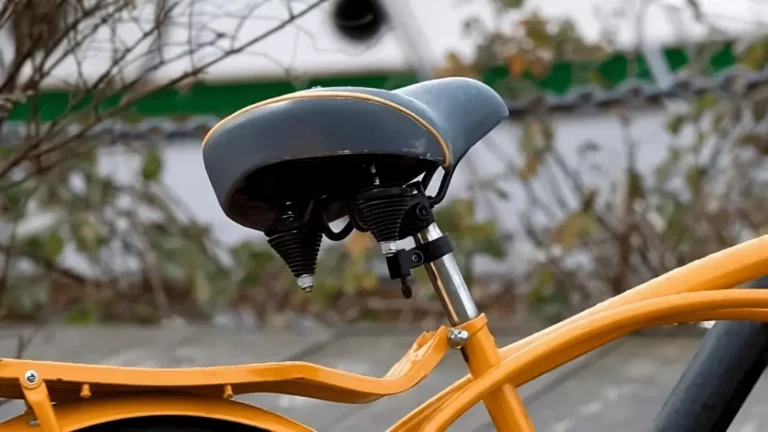Learn How to Count Chain Links Easily

If you own a motorcycle or bicycle, you probably know about chain links, particularly if they have ever malfunctioned and required you to work on them.
Every bicycle and motorcycle chain has both an outer and an inner link. The sides of the inner link are attached to the outer link, constituting a single, cohesive chain with both links facing the same direction.
When counting links in a chain, you need to count each inner link and each outer link separately. When you are attempting to count the links on a motorcycle, you won’t be able to see the outer links as easily as you can see the inner links.
Read the rest of the article to find out how to count chain links on your own.
About Motorcycle Chains
The motorcycle has long been a popular form of transportation, and it has come to be associated with a modern lifestyle. Owing to their compact size and maneuverability, the demand for motorcycles continues to increase, particularly in population-dense urban areas.
This, in turn, results in a significant demand for motorcycle chains in the replacement parts market.
Maintaining a properly functioning chain is critically important. In conjunction with the sprockets, the chain transfers power from the engine to the rear drive wheel.
Chains come in different lengths, and the precise length needed for a particular motorcycle is based on the power that is to be transferred to the wheel.
Within the Indian market, the most popular chain link is 12.7 mm in length and 8 mm in diameter, with a roller that is 7.85 mm wide. These models of chains have either 118 or 120 links.
Why Count Chain Links?
Now, you may be wondering, “Why would I need to count the chain links on my bicycle or motorcycle?”
The answer is that you need to count the chain links so that you can calculate the right chain length for the bike. Knowing how to do so accurately is important.
You will not necessarily be able to determine the proper length simply by measuring the length of the old chain length; it may have suffered from wear and tear over time and become stretched as a result of repeated use and stress.
In other words, it may actually be longer than it originally used to be. If you were to use an old, stretched chain to measure the new chain for your bike, it would end up being much too long and not tight enough for your bike.
It is only by accurately accounting for the number of links that you can correctly calculate the length required for a replacement chain.
Now, let’s explain how you can count the chain links of your bicycle or your motorcycle.
How to Count Chain Links on a Bicycle?
Counting chain links isn’t a hard thing to do. On a bicycle, both the outer and inner links are clearly visible and can thus easily be counted. Let’s have a look at the steps that you need to follow to count them accurately.
Step 1: Flipping the Bicycle
The first thing that you’ll need to do to count the chain links on your bike is to either flip the bike upside-down or otherwise secure it so that you can access the chain.
The goal is to keep the bike in a stable position so the rear pedals and wheels can move independently without any obstacles in the way. The best way to do so is by simply turning it over, so the seat and handlebars are against the ground.
Step 2: Marking the Chain
The next thing that you need to do is mark your chain link with a grease pen, though any marker than will leave a mark can be used.
To know when you’ve made a complete loop, mark the link where you begin counting. Make sure the mark doesn’t come off during your count. Otherwise, you’ll have to start counting again!
Step 3: The Count
Now you need to count the individual chain links. Just make sure that you don’t miss any.
You should count the outer links to make it easier on yourself. It isn’t necessary to count the inner links.
The link pieces that you can see on both sides are the outer links. Count them all till you make a complete loop.
Step 4: Multiply
Now that you’ve counted the chain links, it’s time to multiply the number of your count by two. This will give you the total number of links.
Of course, there is an alternative course: if you want to, you could count both the inner and outer links. However, this isn’t necessary, and it is quicker to simply count one side and then multiply.
If you do decide to count both the inner and outer links, just remember that your result should be an even number. If you end with an odd number, you must’ve counted wrong.
How to Count Chain Links on a Motorcycle?
The process for counting links on a motorcycle chain is similar to counting the links on a bicycle chain.
Here are the precise steps involved in accurately counting the links of a motorcycle chain.
Step 1: Propping up the Motorcycle
You need to place the motorcycle on a maintenance stand to start working on it. Follow an instruction manual for this step.
The bike will need to be upside-down, so you can gain access to the chain to count the links. The goal is to secure the bike in this position while allowing the chain and wheel to turn.
You can skip this step if the chain isn’t on the bike.
Step 2: Marking the Chain
In this step, you must make a mark using a grease pen on one of the chain links. Doing so will help you find where you started your count.
Of course, if you find one of the chain links is unattached, you will not need to make a mark. Instead, lay the chain out in a straight strip and simply start counting from one end.
Step 3: Counting
You will now need to count every one of the outer links. These are easily identified by the large plates on the outer side of each link. count until you return to the beginning, where you started to count, or until you reach the end of the chain, if you laid it out as a strip.
Step 4: Multiply
To include the inner links in your final count, you have to multiply by two. For instance, if you have counted 55 outer links, you must then multiply that by 2, giving you a grand total of 110 links.
Keep in mind that there are always an even number of links since each outer link attaches to an inner link.
Counting the Correct Length of the New Chain
To install a new chain, you will need a chain lock or a chain rivet, and then you will need to determine how many links the new chain will need. To do so, use either of the two ways mentioned below.
First Method
This is the easiest of the two methods, but it is also the least accurate.
You will need to gather both the old chain that you are replacing and the new one, which you are replacing it with.
Place the old chain next to the new chain and mark the length of the old one against the length of the new one. You should then untie the links that you don’t need.
Second Method
For this method, you need to locate the larger chain ring and the larger sprocket. Once you’ve done so, place the chain on them and pull the ends together without passing it through the derailleur.
Count about four additional chain links past the point where the chain starts to overlap. You can then go ahead and untie the rest of the links that you don’t need. Connect the ends of the new chain, and you’re done. The chain is the proper length.
Make sure the chain isn’t too loose. You need a tight-fitting chain to ensure the motorcycle works.
This method works well for exotic motorcycles, such as recumbents, which have a chain that is rerouted again.
Putting the Chain Back On
Putting the chain back on the motorcycle is a straightforward task. You will need a chain tool, in addition to any other specific equipment unique to your bike.
Using the chain tool, separate the chain from the link bolts or studs and then reinsert the studs when you’re done. You can use this tool to shorten the chain to the right length as well.
You may find that it is helpful to use a bike rack, especially if you have to detach the rear wheel. A rack makes it easy for you to mount your chain without straining your back.
If the chains are fitted using a lock, you should be able to open them with special pliers. If the chain is the correct length and has sufficient tension, then the assembly is complete.
If the chain is just a bit too loose, you can easily adjust the wheel to create more tension. There are wheel suspensions on the rear side that provide a little leeway when you mount the wheel. Use the suspensions to adjust the wheel and thus tighten the chain.
While you shouldn’t need to tighten your chain over and over again, you will want to check the adjustment after a few uses.
How Do You Know if Your Chain Needs Replacing?
If you aren’t sure whether your chain needs to be replaced, there are a few things that you can check. Here’s what you need to look for:
See whether your chain moves freely from side to side. It needs to touch the wall of the rear tire and be able to move right over the protective chain runner.
If the top chain on your bike double bounces when you are moving your lower chain both up and down, then your bushes, outer plate, and inner plate are starting to wear out.
Check if there’s any play between the teeth of your rear wheel’s sprocket and the chain. To do so, grasp the chain at the sprocket on the rear wheel, holding firmly on both sides, then pull back. If there’s any play or slack, the chain will need to be replaced.
If you notice any of these issues while checking your chain, you need to replace it.
How Often Should You Lube Your Motorcycle Chain?
You need to lube your motorcycle chain to keep it running smoothly. The question is, how often do you need to do so?
Well, it all depends on the type of your motorcycle and the condition under which you’ve been riding it. In most cases involving a road bike, you should lube the chain of your motorcycle every 300 to 500 miles.
For some off-road motorcycles, such as motocross bikes, you will need to lube the chain much more often. Chains on these bikes dry out much faster than on road bikes.
Final Words
Motorcycle and bicycle chains need to be replaced from time to time. While it is easy to procrastinate, since fixing them can seem like a daunting task, you shouldn’t do so.
If your bike or motorcycle chain needs to be replaced, you will need to count the links. This is not as complicated as it might seem.
If you follow the few easy steps on how to count chain links, you will be able to accurately determine how many links you will need in your replacement chain.

Steve Beck is a passionate cyclist and experienced writer covering the cycling industry for over a decade. He has a wealth of knowledge and expertise in all bike-related things, from the latest products and technologies to the best routes and trails. His articles are well-researched, informative, and engaging, and he has a talent for explaining complex cycling concepts in a way that is easy to understand. Steve can be found on the road when he’s not writing about bikes, putting his knowledge and skills to the test.










